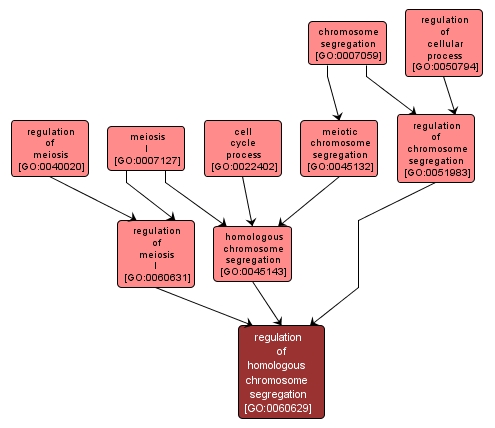| Desc: |
Any process that modulates the rate, frequency, or extent of homologous chromosome segregation, the cell cycle process whereby replicated homologous chromosomes are organized and then physically separated and apportioned to two sets during the first division of the meiotic cell cycle. Each replicated chromosome, composed of two sister chromatids, aligns at the cell equator, paired with its homologous partner; this pairing off, referred to as synapsis, permits genetic recombination. One homolog (both sister chromatids) of each morphologic type goes into each of the resulting chromosome sets. |














